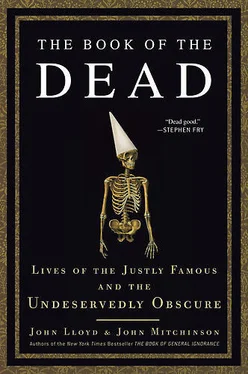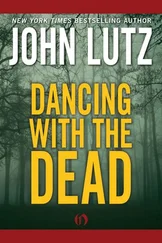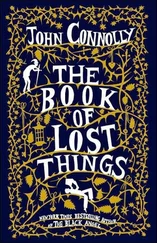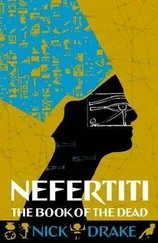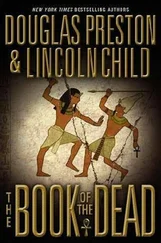Cuthbert was a shepherd boy in the far north of the kingdom of Northumbria, near Dunbar. He walked with a limp, thanks to a painful tumor on his knee. All attempts to cure it failed and his condition grew so bad he was unable to walk. One day, as Cuthbert sat disconsolately outside his hut, a horseman pulled up beside him. He was dressed from head to toe in white. He examined the knee and instructed the boy to apply a poultice of wheat flour and milk. Cuthbert followed his instructions and was cured immediately. Only after the horseman had gone did he realize the stranger had been an angel. Deeply affected by this, Cuthbert returned to his work. He became increasingly devout. When five monks were swept out to sea while salmon fishing, he knelt on the shore, surrounded by people weeping and blaming the disaster on their sinful nature, and calmly prayed for a change of wind. To everyone’s amazement, the wind obeyed and the monks were saved. Soon after this, aged sixteen, he was watching over his sheep one night on the hillside, when he saw the soul of St. Aidan, the Irish monk and founder of the abbey at Lindisfarne, being carried up to heaven by angels. He didn’t know who Aidan was at that stage (and he certainly didn’t know that Aidan had died at that moment) but he knew he was a great man and wanted to follow him. The next day he abandoned his flock and became a novice at Melrose Abbey in the Scottish Borders. Many years later, he would succeed St. Aidan as Abbot of Lindisfarne.
Cuthbert was destined to become famous for his piety and for his miraculous gifts. Rather than spend time in the monastery, he chose to be an itinerant missionary, preaching and healing among the remote villages and hill farms of northern Britain. He founded a chapel at Dull in Perthshire and built a monastic cell in Fife, which eventually became the monastery out of which the University of St. Andrews was founded in 1413. Like St. Francis of Assisi, Cuthbert loved nature and had a particular affinity for wild animals. On one occasion, after spending the night up to his waist praying in the icy North Sea, he was visited by two otters, which first breathed on his frozen feet to warm them and then dried them off by tousling them with their furry backs. Another time, an eagle saved him from starvation by bringing him a fish, which he insisted on sharing with the kindly bird.
In 669 his wanderings came to an end when the Abbot of Melrose sent him on a special mission to Lindisfarne. He was given the task of persuading the monks there to accept the authority of Rome, as ordered by the Synod of Whitby in 664. The Synod was a major turning point in the early history of the British church. It marked the end of independent Celtic Christianity, a loosely administered, missionary-based religion, introduced into Ireland by St. Patrick in the fifth century and taken to Scotland and northern England by St. Columba. Theologically, the Synod had concerned itself with technical matters such as the date of Easter and whether or not monks should shave their heads into a tonsure (a Roman custom symbolizing the Crown of Thorns). Politically, however, it was about Rome imposing a central set of rules. Many British monastic institutions (including Lindisfarne, which had been founded in the Celtic tradition) were resistant to the changes.
Cuthbert was the perfect man to make them see the light. He had all the credibility that came from wandering the wilds as a missionary in the Celtic mode, but was also a pious and obedient member of a Benedictine monastery, committed to the authority of Rome. His time at Lindisfarne was stressful—Bede writes of his being “worn down by bitter insults”—but he managed to win his brothers over by praying harder and longer than anyone else. And his piety was matched by a sunny temperament, which meant he never held a grudge or returned an insult. He gave the credit for his behavior to the Holy Spirit working within him and giving him “the strength to smile at the attacks from without.” Once, having stayed up for several nights in a row praying, he had finally fallen asleep when a novice woke him up again on a trivial matter. He waved away the apologies saying: “No one can displease me by waking me out of my sleep, but, on the contrary, it gives me pleasure; for, by rousing me from inactivity, he enables me to do or think of something useful.”
Having persuaded the monks to submit to Rome, Cuthbert withdrew from the daily life of the community and retired to an isolated cell where he spent his days in constant prayer and meditation. In 676 a vision commanded him to leave Lindisfarne altogether and become a hermit on the inhospitable island of Inner Farne, two miles off the Northumbrian coast. It was a life of extreme austerity: just him and the elements and thousands of pairs of guillemots, puffins, and eider ducks. With his own hands, out of stone, he built a two-roomed house surrounded by a high wall. This meant he could spend much of his time praying outdoors, “with only the sky to look at, so that eyes and thoughts might be kept from wandering and inspired to seek for higher things.” He was soon inundated by visits from pilgrims. News of the “Wonder Worker of Britain” had spread and there was a constant stream of visitors asking for healing and counseling. As Bede describes it: “Not one left unconsoled. No one had to carry back the burdens he came with.” In return, Cuthbert asked only that his uninvited guests respect the local animals, and he absolutely forbade the hunting of all nesting birds—probably the world’s first piece of wildlife conservation legislation. In his honor, the locals there today still call eider ducks Cuddy ducks.
As the years passed, Cuthbert grew ever more isolated. He withdrew further into his sanctuary, communicating with the outside world through a small window and only emerging to have his feet washed by fellow monks on Maundy Thursday, in remembrance of Christ’s doing the same before the Last Supper. It was the one time in the whole year he removed his leather boots, and the monks noticed that his shins bore long calluses caused by the endless hours of kneeling in prayer.
In 684 Cuthbert was elected bishop of Lindisfarne. After almost a decade as a hermit, he was reluctant to accept. Only after a personal visit by Ecgfrith, king of Northumbria, was he persuaded to leave his refuge. For two years, he threw himself back into missionary work: traveling all over the diocese, preaching the virtues of frugality and prayer, healing the sick, performing the occasional miracle, and taking “delight in preserving the rigours of the monastery amidst the pomp of the world.” By the end of 686 he’d had enough. A premonition of his impending death led him to return to Inner Farne and prepare for the end.
In the last year of Cuthbert’s life, a monk called Herefrith visited him on his island and was taken aback by the level of his self-denial. The saint showed him his weekly rations, which consisted in their entirety of five onions. St. Cuthbert told him: “Whenever my mouth was parched or burned with excessive hunger or thirst I refreshed and cooled myself with these.” Only one of the onions had been touched. Cuthbert had successfully managed to fight off the devils of luxurious sensuality—though he confessed that “my assailants have never tempted me so sorely as they have during the past five days.” He died quietly, stretching his arms upward and commending his soul to God. The monks who were with him lighted two beacons, telling their brothers over the water at Lindisfarne that their beloved bishop had passed away.
Cuthbert was fifty-three years old. He had always wanted to be buried where he lay, by his little stone house on his lonely island, near his friends the otters, eagles, and seabirds, but shortly before he died, he gave the monks permission to bury him at Lindisfarne. His grave became the site of a miraculous cure. A boy, possessed by demonic fits, was brought to the holy place. The monks located the spot where the water used to wash Cuthbert’s body had been poured into the ground and gave the boy some of the soil to eat. At once the demons left him and the boy was calmed.
Читать дальше
